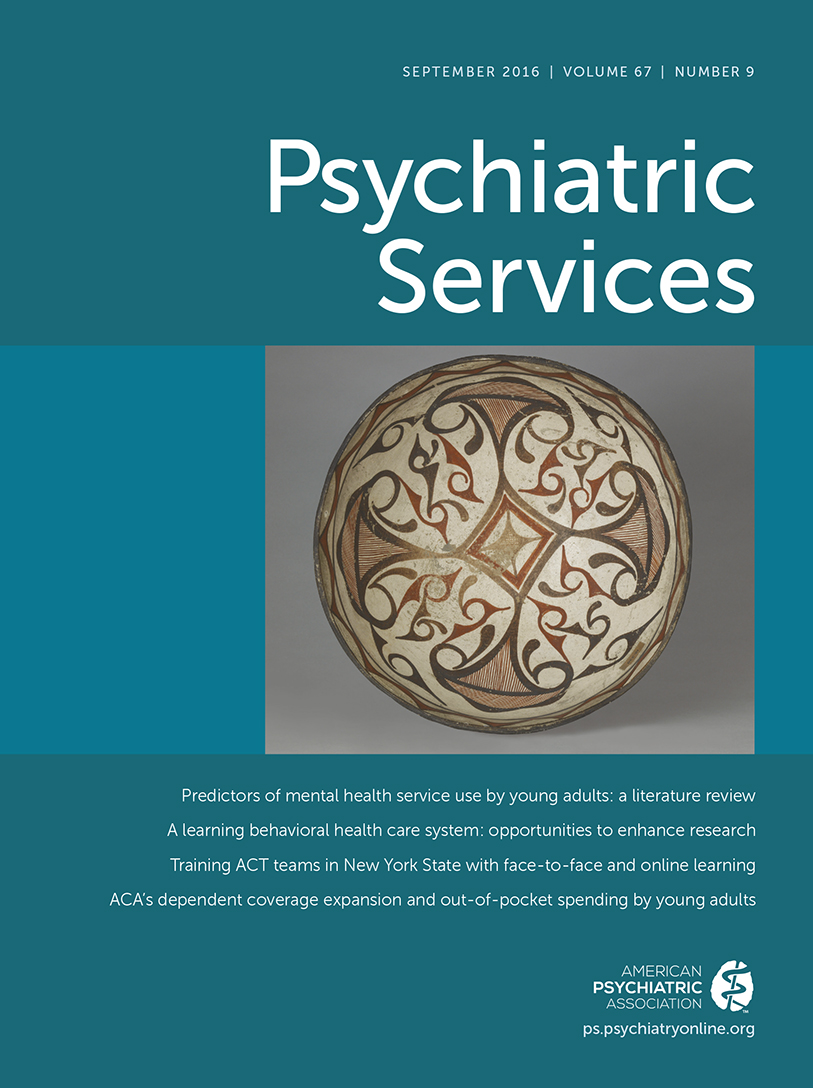The Clinical Utility of PHQ-9 Item 9 for Suicide Prediction
TO THE EDITOR: In their report in the May issue, Louzon and her coauthors (1) employed statistics associated with survival analysis to assess whether item 9 of the nine-item Patient Health Questionnaire (PHQ-9) has clinical utility for predicting suicide mortality. Item 9 asks, “Over the past two weeks, how often have you been bothered by thoughts that you would be better off dead or of hurting yourself in some way?” Response options are “not at all,” “several days,” “more than half the days,” and “nearly every day.”
At several points in the article, Louzon and colleagues seem to imply that their analysis showed that item 9 of the PHQ-9 can be clinically useful for predicting suicide. I propose that an alternative, more pertinent consideration of their data supports a markedly different inference.
If we are evaluating a test that will be used to “predict suicide,” as per the title of the article, our concern must be with the probability that a person with a positive score on the test will die by suicide (known as the positive predictive value, or PPV) and the probability that a person with a negative score on the test will not die by suicide (negative predictive value, or NPV). Data presented by the authors in Table 2 allow for the computation of these values for their sample.
Taking a “positive” score to mean that a person responded “nearly every day” to item 9, one would predict 8,589 suicides; however, only 22 of those participants died by suicide (PPV=.26%). Taking a response of “not at all” as a “negative” score, one would predict that 343,635 would not die by suicide; of those participants, 343,413 did not die by suicide. Although this results in a respectable NPV of 99.94%, it nevertheless means that 222 of the 244 participants in this comparison who did die by suicide were falsely predicted to not be at risk of suicide. (Similar results are obtained when a “not at all” response is compared with any or all other responses to item 9.)
Practically speaking, a clinician who predicted that a person in Louzon and colleagues’ sample would die by suicide, on the basis of the person’s reporting any suicidal ideation on item 9, would have been wrong over 99.5% of the time; hence, the item has no clinical utility for predicting suicide.
Louzon and her colleagues studied a sample of veterans. Although the prevalence of suicide among veterans may be higher than in the general population, it is still very low in real terms. A very low base rate for a characteristic that we wish to predict makes it well-nigh impossible to obtain a useful level of PPV.
1 : Does suicidal ideation as measured by the PHQ-9 predict suicide among VA patients? Psychiatric Services 67:517–522, 2016Link, Google Scholar



